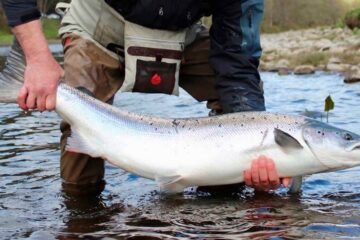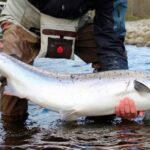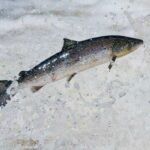A 166-million-year-old fossil unearthed on the Isle of Skye has become the most complete dinosaur skeleton ever found in Scotland, offering a rare window into a mysterious period of evolutionary history.
The partial remains belong to a small-bodied herbivorous dinosaur, likely an early member of the Ornithopoda clade — a group that would later include larger plant-eaters like Iguanodon and Hypsilophodon. This discovery, made by a team led by National Museums Scotland, sheds light on a globally scarce fossil record from the Middle Jurassic, a time pivotal to dinosaur diversification.
A Long-Forgotten Find, Finally Examined
Although the specimen was first spotted in 1973, it was not formally collected and studied until 2018. It was located in rocks of the Kilmaluag Formation, north of the village of Elgol on the Isle of Skye.
-
Location: Isle of Skye, Kilmaluag Formation
-
Age: 166 million years (Middle Jurassic)
-
Type: Ornithischian, likely Ornithopod
-
Specimen details: Partial ilium, neural arch, rib fragments, larger skeletal elements
The remains were found clustered on a single bedding plane, spread across a modest area measuring 60 cm by 40 cm, indicating they likely belonged to a single individual.
“This is the most complete definite dinosaur known from Scotland,” said Dr. Elsa Panciroli, paleobiologist at National Museums Scotland and co-author of the study.

Why the Middle Jurassic Matters
Despite its evolutionary significance, the Middle Jurassic period remains one of the least understood chapters in dinosaur history. While earlier periods (Triassic and Early Jurassic) are relatively well documented, fossils from the Middle Jurassic are globally rare, and often fragmentary.
“Dinosaurs during this time began radiating into the diverse species that would dominate the Late Jurassic ecosystems,” Panciroli and colleagues noted.
The fossil record from this epoch is so sparse that each new discovery has potential to reshape existing evolutionary models.
Global Significance from a Remote Scottish Island
The Kilmaluag Formation has emerged in recent years as a critical Middle Jurassic fossil site, yielding not only dinosaurs but also early mammals, amphibians, and marine reptiles. The discovery of this ornithischian fossil further cements Skye’s status as a paleontological hotspot.
“The Middle Jurassic of Scotland is increasingly well represented by the fossil discoveries from the Kilmaluag Formation,” the researchers wrote in the journal Earth and Environmental Science Transactions of the Royal Society of Edinburgh.
If confirmed to be an ornithischian, this specimen would be the youngest known example of the group in Scotland, and the first ever from the Kilmaluag Formation.
From Bones to Breakthroughs
Paleontologists analyzed the fossil using histological sectioning, a technique involving thin slices of bone viewed under a microscope, which helped classify the dinosaur within the ornithischian group. Though the skeleton is fragmented, the associated bones’ preservation on a single bedding plane makes the find unusually coherent.
Further studies could refine the dinosaur’s classification and improve our understanding of how early herbivores adapted to their environment during this key transitional period.


















